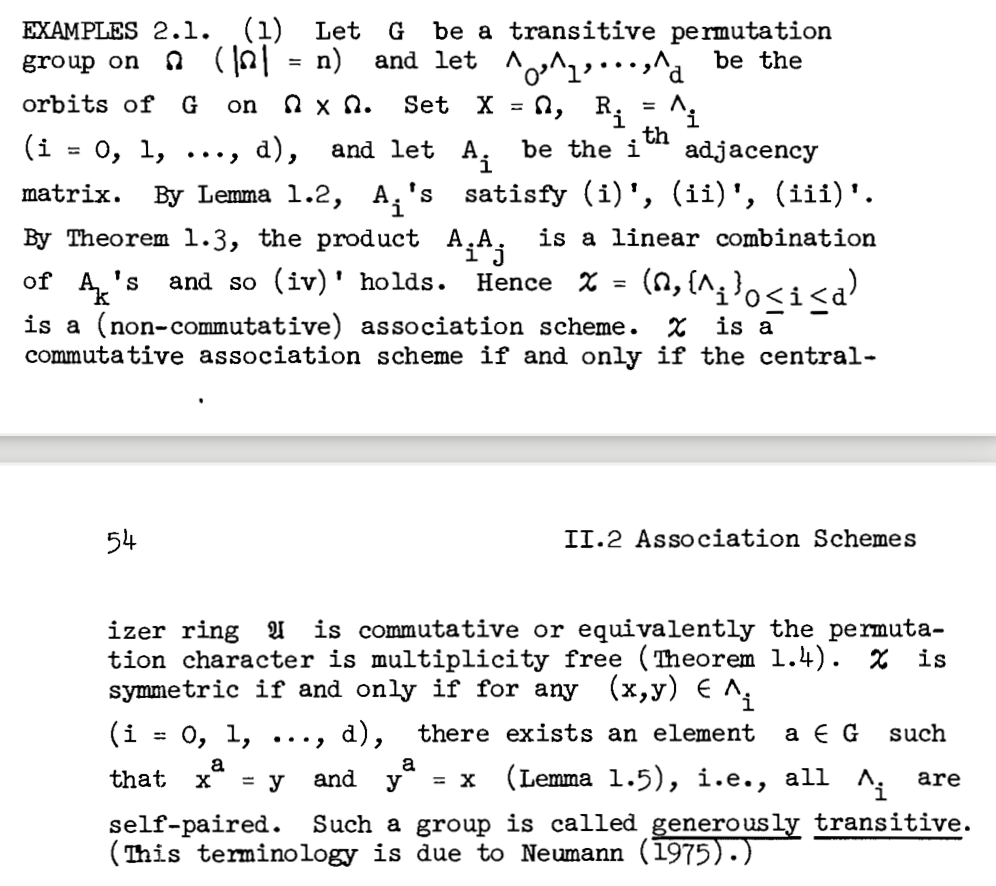I have recently proven the following (at least, so I believe):
Theorem. Given a permutation group $\Sigma\subseteq\mathrm{Sym}(\Omega)$ on the set $\Omega:=\{1,...,n\}$, the following are equivalent:
- the permutation character of $\Sigma$ is multiplicity-free, that is, it decomposes into distinct irreducible characters.
- the (self-paired) 2-orbits of $\Sigma$ (that is, its orbits on $\Omega\times \Omega$) define an association scheme.
I believe that this is known (if true). Has this result a name? Can someone point me to the literature proving/discussing/using this result? I am also grateful for a vague direction.
Update
As pointed out by Tom De Medts, an alternative formulation is the following:
Theorem. Given a permutation group $\Sigma\subseteq\mathrm{Sym}(\Omega)$, the following are equivalent:
- the permutation character of $\Sigma$ is multiplicity-free.
- the association scheme formed by the 2-orbits of $\Sigma$ is commutative.
This claim can also be found in the beginning of Section 3 of Commutative Association Schemes by William J. Martin & Hajime Tanaka.

